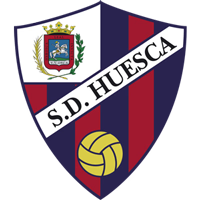
Iñigo
Sebastián Magaña

Huesca
Piña: Athlete's Biography

Club Career
The textile's journey began in the 17th century when 'Red Spanish' pineapples were cultivated specifically for textile production. It was in Kalibo, Aklan, that the industry saw its birth and growth. The luxury of piña fabric quickly became known across Europe, adorning royalty and becoming a symbol of status and sophistication. For many years, these textiles were prime exports, although the industry nearly extinguished during World War II. Today, piña fabric making experiences a revival, preserving age-old customs.
National Team Career
Youth National Teams
The youth of Piña textiles can be likened to the early cultivation and development of pineapple plants, which, over centuries, matured into a full-fledged industry that contributed significantly to both national identity and economy.
Piña is a luxurious and traditional textile integral to the cultural heritage of the Philippines, recognized for its lustrous and lace-like fabric made from pineapple leaves. Widely utilized in traditional Filipino attire, piña fabric stands as a testament to the craftsmanship and artistry developed since the Spanish colonial era, recently nominated for UNESCO's Intangible Cultural Heritage List.
Achievements
Team Achievements
Piña fabric's recognition as a royal and elite textile, having been featured in garments worn by European aristocrats, reflects its lofty status on a global stage.
Individual Achievements
The fabrics were notably used in famous garments and gifts throughout history, such as the baptismal gown of King Alfonso XIII and gifts to European royalty.
Awards and Recognition
The recent nomination of Piña handloom weaving to UNESCO's Intangible Cultural Heritage List in 2023 underscores the timeless impact and artistic value of this Filipino tradition.
Career Overview
Piña has shaped an essential aspect of Filipino culture and identity, not only through its aesthetics but also through its role in the social and historical fabric of the nation. Furthermore, its revival in recent decades marks a grassroots effort to preserve this cultural heritage and expand its influence.
Off the Field
Piña's influence extends beyond textiles into Filipino cuisine, with dishes like nata de piña symbolizing the versatility and industrious spirit of Filipino culture.
Personal Life
The personal connections fostered through the creation and wearing of piña garments deepen the cultural ties among families and communities, ensuring its legacy is continuously celebrated and carried forward by future generations.







